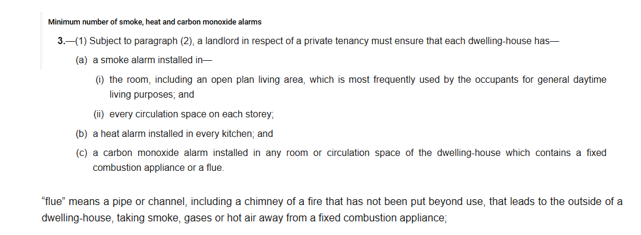
Extracts from the Smoke, Heat and Carbon Monoxide Alarms for Private Tenancies Regulations (NI)
I understand from several contractors who have reported that their wholesaler, with the backing of a well-known national manufacturer of domestic smoke, heat and CO alarms, are contending that CO alarms are also required in rooms through which a flue might pass. That contention seems to be based on the above regulation, 3(1) (c) and the interpretation of "flue"
It would seem to me to be a stretch of the credible to consider that a ground floor chimney breast without further openings, extending upwards to carry the flue through a first-floor room to the chimney stack outside, would require a CO detector to be fitted in that room.
I am wondering if anyone has bumped into similar contentions on the mainland.